Cold Room Panels
Optimized & Cold chain Industry-ready Solutions
For All Your Complicated Needs
Polyurethane(PU) panel is mainly used in various types of cold storage, such as fresh-keeping, freezing, quick freezing and other cold storage with different temperature requirements. Insulated PU panel with different thickness can be produced according to different temperature requirements.
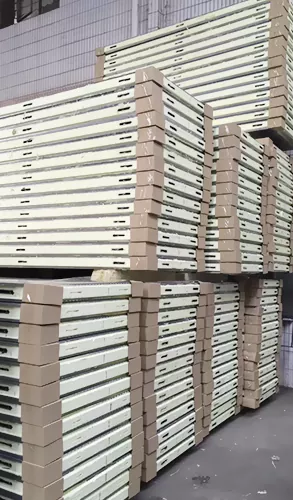
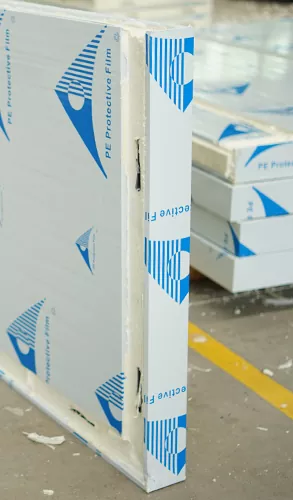
Our Innovations
Cold Storage Industry Focused Application!
|
Cold Storage Types
|
Temperature
|
Application
|
|---|---|---|
|
Preservation Library
|
5ºC~-5ºC
|
Fruits,vegetables,flowers,dairy products,alcohol,chocolate,rice wine,fresh eggs,fresh meat and so on
|
|
Cold Storage
|
-10ºC~20ºC
|
Frozen fish, frozen meat, frozen poultry, frozen eggs and so on
|
|
Freezer
|
-20ºC~-35ºC
|
Fish,fresh and freeze rice products,ice cream,blood products,chemical raw materials and so on such as low-temperature storage
|
|
Other Non-Standard Cold Storage
|
10ºC~-60ºC
|
Electronics,metallurgy,bio-pharmaceutical,chemical,automotive building materials industries such as aerospace industrial test ultra-low temperature freezer cold treatment
|
Our Production
Cold Storage Industry Focused Products!
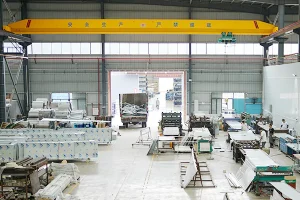
Cold storage panels are typically made from a combination of materials that provide insulation and structural support. The materials used for these panels include polyurethane foam. The panels are often sandwiched between two layers of metal, such as galvanized steel or aluminum, to create a strong and durable structure. The insulation properties of these materials make them ideal for use in cold storage facilities, where maintaining a consistent temperature is crucial. Additionally, these panels are often designed to interlock, making them easy to install and creating a seamless barrier to prevent the escape of cold air.
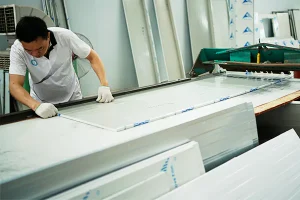 Calculating, cutting, and bending stainless steel panels for cold storage requires careful planning and precise execution. The first step is to measure the dimensions of the space where the panels will be installed, and to calculate the required panel sizes. Once the panel sizes have been determined, they can be cut using a metal shear or other cutting tools, such as a plasma cutter or a laser cutter. After cutting, the panels may need to be bent or formed to fit the contours of the cold storage area. This can be done using a press brake, which uses a set of dies to bend the metal to the desired angle. Careful attention must be paid to the bending process, as improper bending can weaken the structure and reduce insulation efficiency. Additionally, it is important to ensure that the panels are properly aligned and fitted together to create a seamless barrier that prevents the escape of cold air. Proper installation and sealing of the panels is crucial for maintaining the temperature and integrity of the cold storage environment.
Calculating, cutting, and bending stainless steel panels for cold storage requires careful planning and precise execution. The first step is to measure the dimensions of the space where the panels will be installed, and to calculate the required panel sizes. Once the panel sizes have been determined, they can be cut using a metal shear or other cutting tools, such as a plasma cutter or a laser cutter. After cutting, the panels may need to be bent or formed to fit the contours of the cold storage area. This can be done using a press brake, which uses a set of dies to bend the metal to the desired angle. Careful attention must be paid to the bending process, as improper bending can weaken the structure and reduce insulation efficiency. Additionally, it is important to ensure that the panels are properly aligned and fitted together to create a seamless barrier that prevents the escape of cold air. Proper installation and sealing of the panels is crucial for maintaining the temperature and integrity of the cold storage environment.
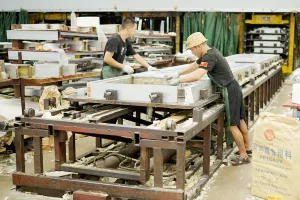 The foam insulation process for cold storage panels involves injecting polyurethane foam or other insulating materials between the two metal layers of the panel. The foam is typically sprayed into the cavity using a high-pressure foam injection machine, which mixes the foam components and pumps the mixture into the panel. As the foam expands, it fills the space between the metal layers and adheres to the surfaces, creating a solid and seamless insulation layer. This foam layer helps to prevent heat transfer and maintain a consistent temperature inside the cold storage area. After the foam has been injected and allowed to cure, the excess foam can be trimmed and the panel edges can be sealed to ensure a tight and secure fit. Proper insulation is critical for the efficiency and effectiveness of the cold storage facility, and the foam insulation process is an important step in achieving this goal.
The foam insulation process for cold storage panels involves injecting polyurethane foam or other insulating materials between the two metal layers of the panel. The foam is typically sprayed into the cavity using a high-pressure foam injection machine, which mixes the foam components and pumps the mixture into the panel. As the foam expands, it fills the space between the metal layers and adheres to the surfaces, creating a solid and seamless insulation layer. This foam layer helps to prevent heat transfer and maintain a consistent temperature inside the cold storage area. After the foam has been injected and allowed to cure, the excess foam can be trimmed and the panel edges can be sealed to ensure a tight and secure fit. Proper insulation is critical for the efficiency and effectiveness of the cold storage facility, and the foam insulation process is an important step in achieving this goal.
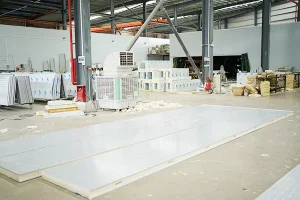 Pre-installation testing is an essential step in ensuring the proper function and efficiency of a cold storage system. This process involves testing the panels, insulation, doors, and refrigeration system before they are installed in the final location. The goal of pre-installation testing is to identify any issues or defects that may impact the performance of the system and address them before installation. This can include testing the insulation properties of the panels, checking the seals and gaskets on the doors, and ensuring that the refrigeration system is functioning properly. Pre-installation testing can help to prevent costly downtime and repairs after installation, and ensure that the cold storage system is ready for use as soon as it is installed. Additionally, regular maintenance and testing of the cold storage system after installation is important to ensure continued performance and efficiency over time.
Pre-installation testing is an essential step in ensuring the proper function and efficiency of a cold storage system. This process involves testing the panels, insulation, doors, and refrigeration system before they are installed in the final location. The goal of pre-installation testing is to identify any issues or defects that may impact the performance of the system and address them before installation. This can include testing the insulation properties of the panels, checking the seals and gaskets on the doors, and ensuring that the refrigeration system is functioning properly. Pre-installation testing can help to prevent costly downtime and repairs after installation, and ensure that the cold storage system is ready for use as soon as it is installed. Additionally, regular maintenance and testing of the cold storage system after installation is important to ensure continued performance and efficiency over time.
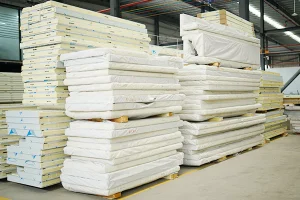
Before shipping and installation, cold storage panels are typically protected with packaging materials and plastic wrap to prevent damage during transit. This process involves carefully wrapping each panel in a protective film or plastic wrap, which helps to prevent scratches, dents, and other types of damage that can occur during handling and transportation. The panels are then securely packaged in crates or pallets to prevent movement and ensure they arrive at their destination in good condition. This packaging and protection process is critical to ensuring that the panels are installed in the proper condition and function effectively once in place. Once the panels are delivered to the installation site, the packaging and plastic wrap can be removed and the panels can be inspected and installed according to the manufacturer’s specifications.